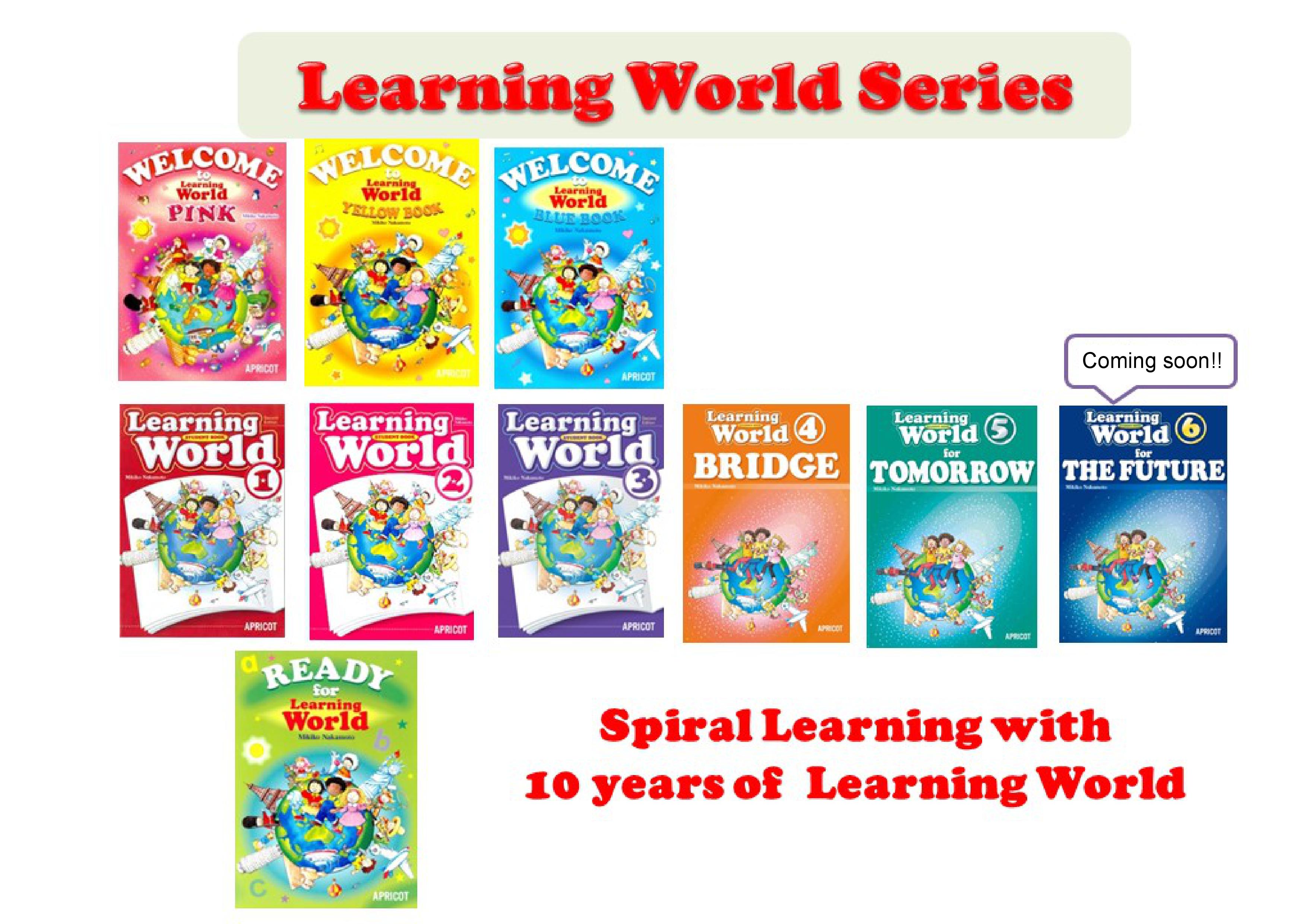

- 54. 10 Useful Pieces of Advice for Teaching with LEARNING WORLD #9 & 10
- 55. “Happy New Year!” “I don’t say that.”
- 53. Halloween 2019
- 52. READY Workbook Pg. 17
- 51. English-Uplift 1-Day Seminars
- 50. READY Workbook - vocabulary copying activity
- 49. 10 Useful Pieces of Advice for Teaching with LEARNING WORLD #8
- 48. 10 Useful Pieces of Advice for Teaching with LEARNING WORLD #7
- 47. 10 Useful Pieces of Advice for Teaching with LEARNING WORLD #6
- 46. 10 Useful Pieces of Advice for Teaching with LEARNING WORLD #5
- 45. 10 Useful Pieces of Advice for Teaching with LEARNING WORLD #4
- 44. 10 Useful Pieces of Advice for Teaching with LEARNING WORLD #3
- Kindergarten aged students
- Lower Elementary-school aged students
- Upper Elementary-school aged students
- Junior High and older students
- Others
46. 10 Useful Pieces of Advice for Teaching with LEARNING WORLD #5
https://www.apricot-plaza.co.jp/en/advice-box/usage-and-methods/jikkkun:
This post will look at #5:
5. A Textbook is not everything!
Textbooks are just tools. It’s all up to teachers to make or break. Teachers must adjust how to use the tools as the situation demands.
The choices you make with textbooks for your students are important, but the textbook itself is indeed just “a tool”. As I have stressed many times at APRICOT workshops throughout the years, a textbook is “a tool to bring your policy into the classroom”.
As teachers, we should all have some kind of policy in place for our students; your policy is what drives you and your students forward together, in the direction you wish to take them. If possible, we should form this policy before we choose a textbook for our students.
As you probably know, no textbook is perfect. And LEARNING WORLD is no exception. Over the years I’ve heard many, many teachers complain about certain textbooks – including LEARNING WORLD. Complaining teachers are usually very short on specifics on why they have problems with certain textbooks, and when I ask them “What’s your policy?”, they are usually unable to answer.
Sure, in class I occasionally make adjustments to the content and arrangement of LEARNING WORLD here and there to suit the needs of my students. But I don’t complain because the decision to adjust was entirely mine. Furthermore, I’m absolutely in no rush to shop around for a possible replacement textbook because LEARNING WORLD is for me the best textbook (or “tool”) for the policy I have in place for my students.
If you are not sure on how to form your policy, try asking yourself these two questions:
- What kind of adults do you want your students to become?
- What kind of adults will tomorrow’s society need?
Once you have the answers to these questions, then everything you do in the classroom should be under the assumption that your students have already become these adults. For example, if you want your students to become adults who can create new ideas, then give your students lots of opportunities to create new ideas NOW. Or if you want your students to become adults who can express themselves, then give your students lots of opportunities to express themselves NOW.
With this principle in place in your classroom, then you are able to make better choices regarding textbooks, and you are better equipped to make adjustments within them where necessary.
Remember, “a textbook is a tool to bring your policy into the classroom”.





















